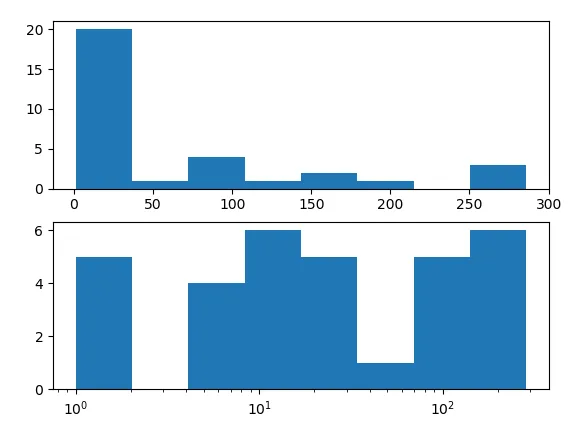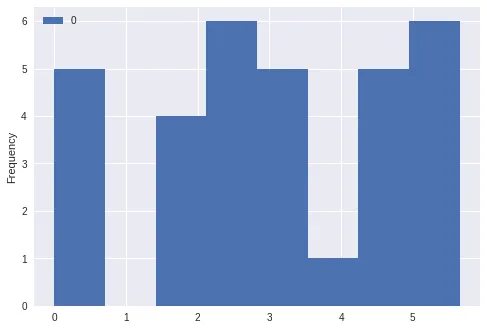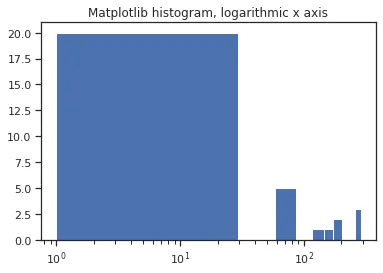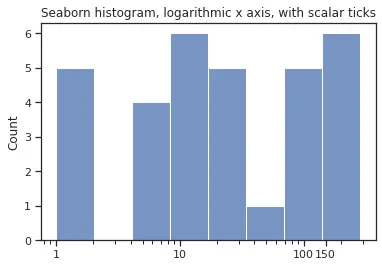我有一个Pandas DataFrame,其中的Series包含以下值
x = [2, 1, 76, 140, 286, 267, 60, 271, 5, 13, 9, 76, 77, 6, 2, 27, 22, 1, 12, 7, 19, 81, 11, 173, 13, 7, 16, 19, 23, 197, 167, 1]
我被指示在使用Python 3.6的Jupyter笔记本中绘制两个直方图。
x.plot.hist(bins=8)
plt.show()
我选择了8个箱子,因为这样看起来最好。 我还被指示使用x的对数绘制另一个直方图。
x.plot.hist(bins=8)
plt.xscale('log')
plt.show()
这个直方图看起来太糟糕了。我是不是做错了什么?我尝试了调整绘图,但我所尝试的一切似乎只能让直方图看起来更糟糕。例如:
x.plot(kind='hist', logx=True)
除了要绘制X的对数直方图之外,我没有收到任何其他指示。
值得一提的是,我已经导入了pandas、numpy和matplotlib,并指定图表应该是内联的。






plt.hist(np.log(x))。 - ei-grad